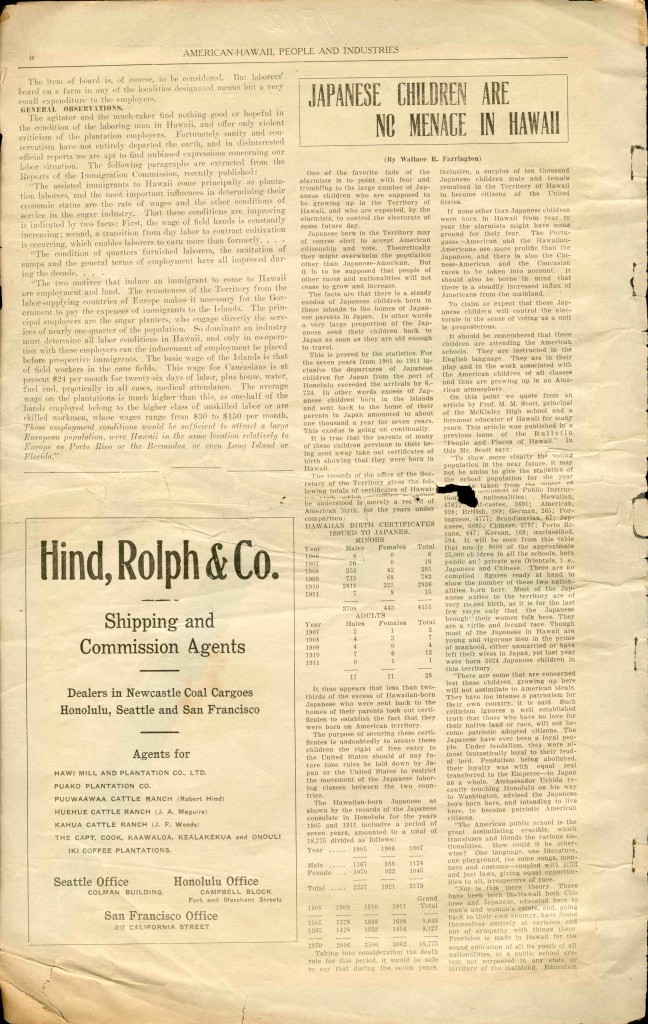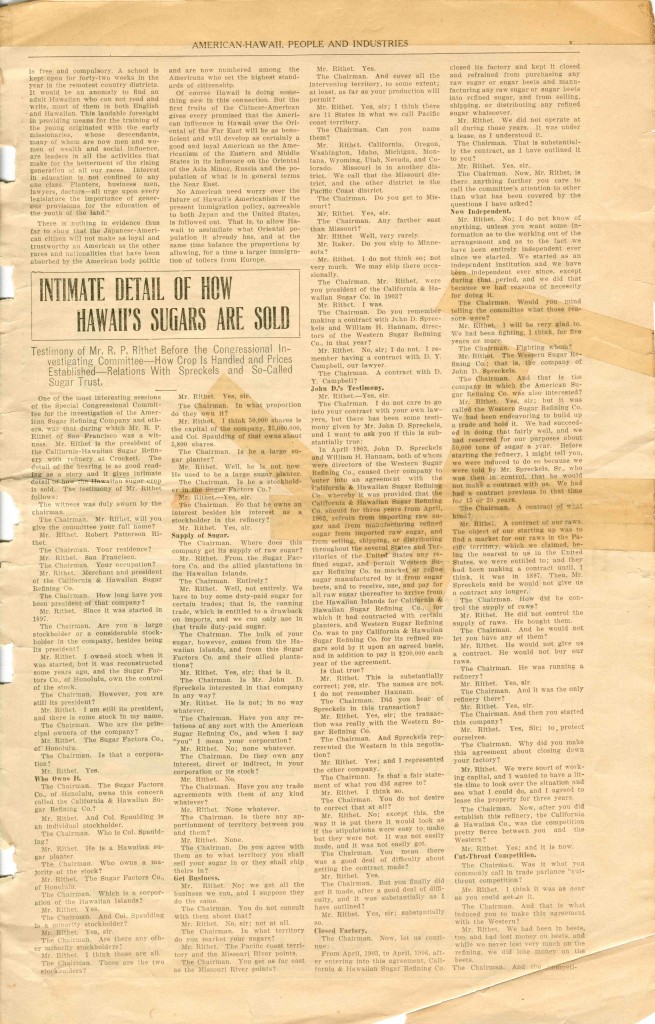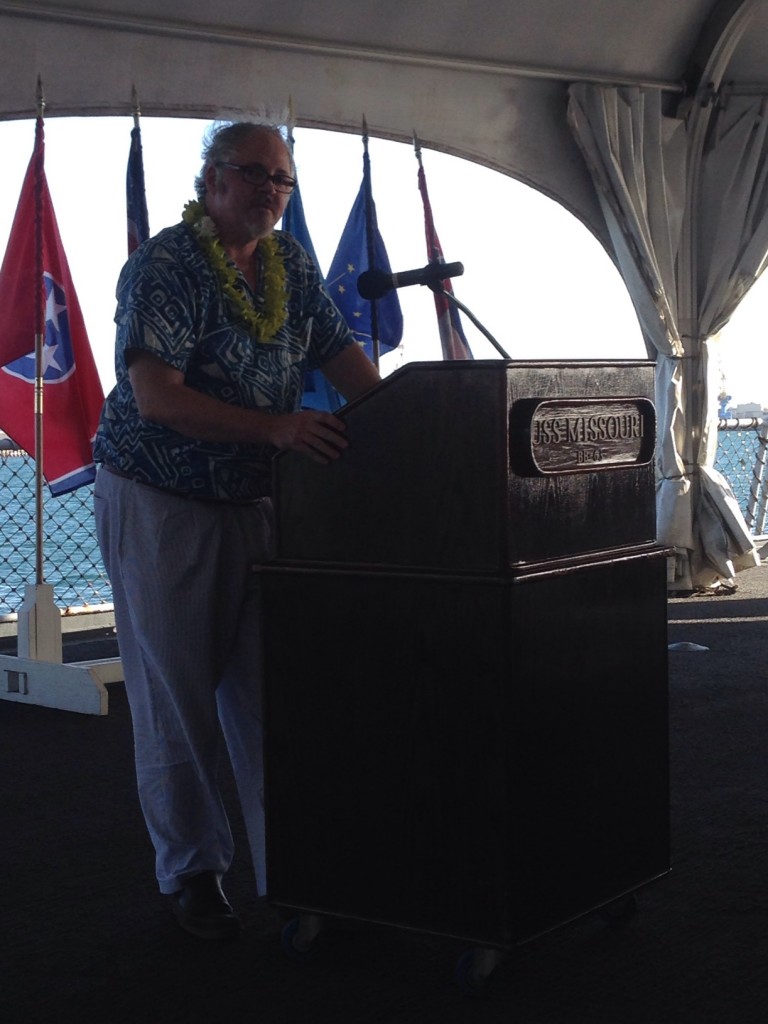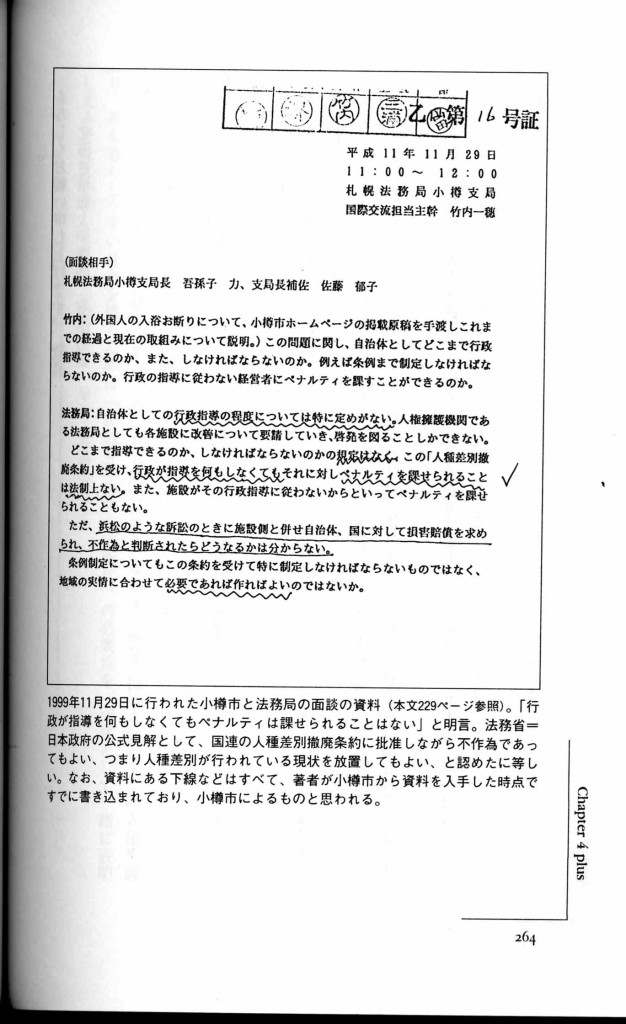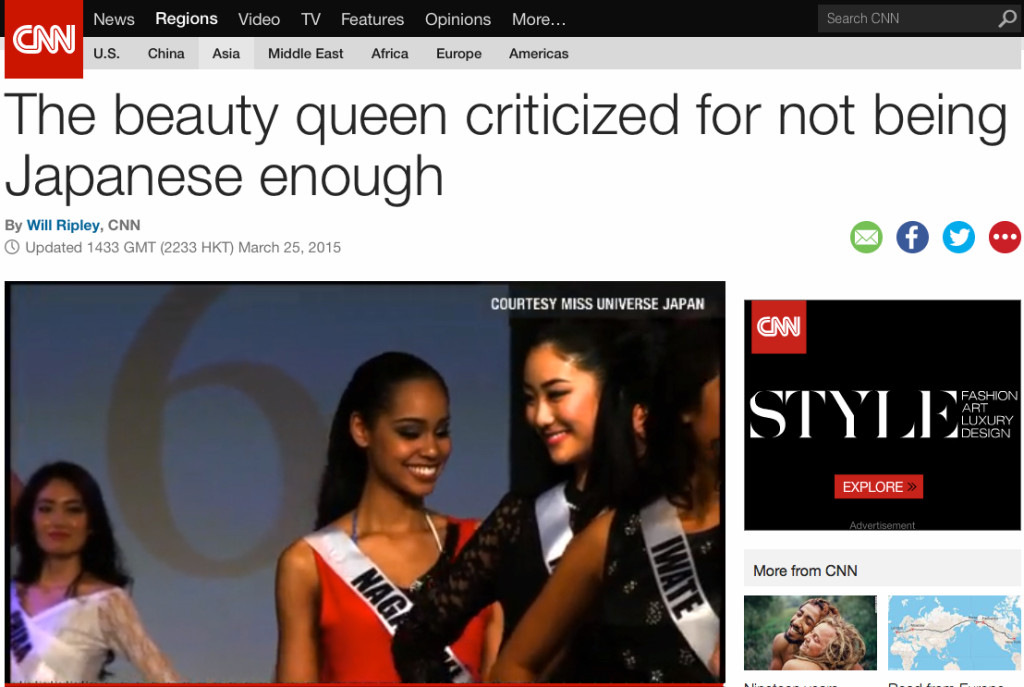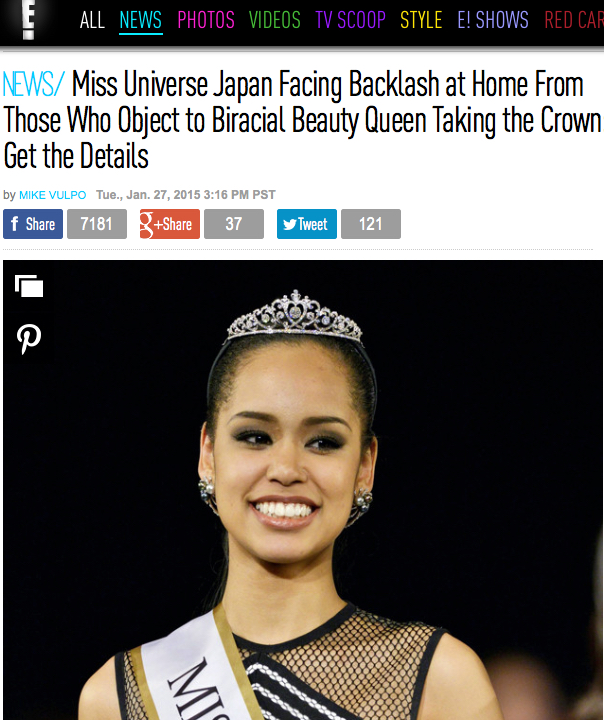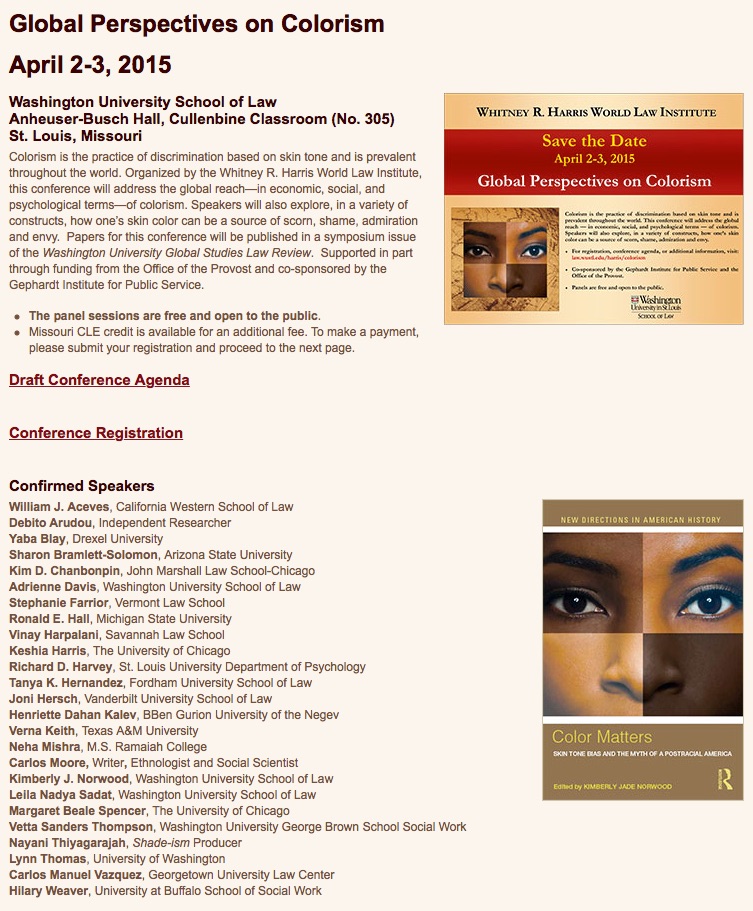mytest
eBooks, Books, and more from Dr. ARUDOU, Debito (click on icon):
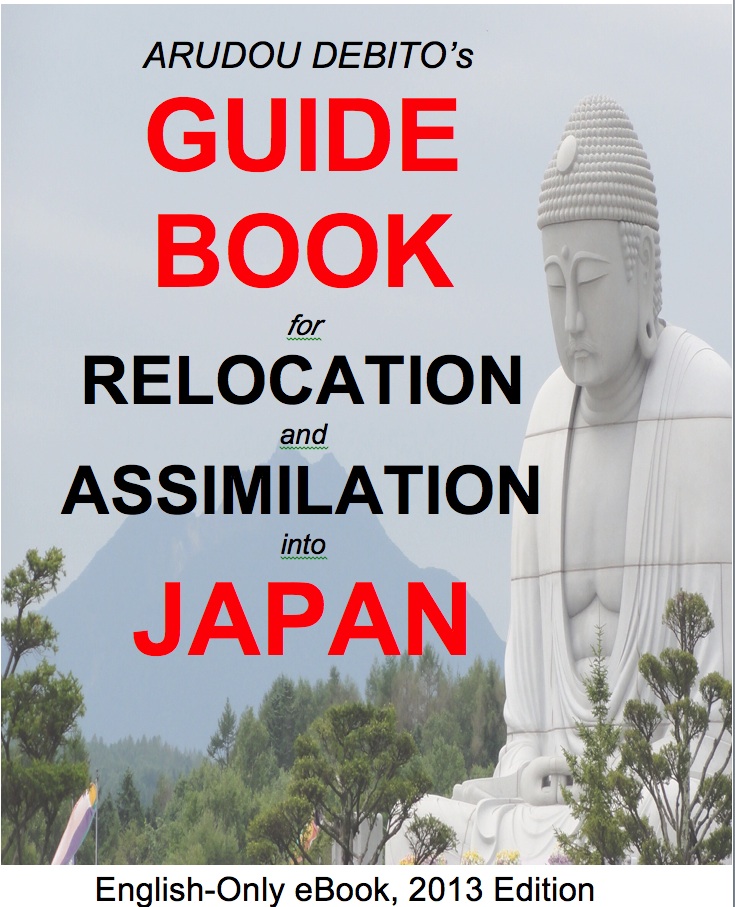
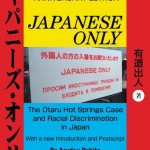
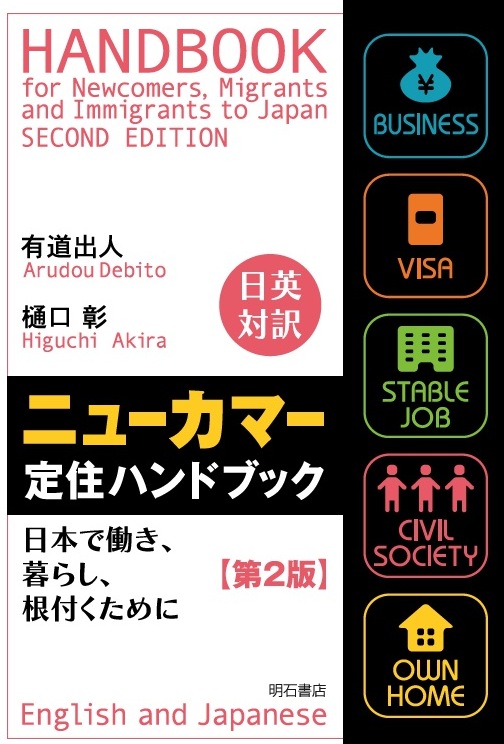
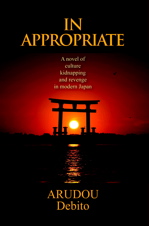




UPDATES ON TWITTER: arudoudebito
DEBITO.ORG PODCASTS on iTunes, subscribe free
“LIKE” US on Facebook at http://www.facebook.com/debitoorg
http://www.facebook.com/handbookimmigrants
https://www.facebook.com/JapaneseOnlyTheBook
https://www.facebook.com/BookInAppropriate
If you like what you read and discuss on Debito.org, please consider helping us stop hackers and defray maintenance costs with a little donation via my webhoster:

All donations go towards website costs only. Thanks for your support!
DEBITO.ORG NEWSLETTER APRIL 5 2015
Table of Contents:
/////////////////////////////////////////////////////
ENFORCING JAPAN’S NATIONAL NARRATIVE
1) Asia-Pacific Journal: Japan Focus carries full text of my interview with Dr. Herbert Ziegler on GOJ pressure to censor his history book of “Comfort Women”
2) NYT Opinion: Mindy Kotler on “The Comfort Women and Japan’s War on Truth”, an excellent primer on the issue
3) Kyodo: Japan didn’t meddle with U.S. “Comfort Women” textbook, Japanese Ambassador to US Sasae claims; meanwhile GOJ panel established to “Restore the Honor and Trust of Japan”
4) Renewed GOJ projections of hard and soft power: Yomiuri argues for remilitarization “to protect J-nationals abroad”, Reuters reports GOJ reinvestment in overseas universities, claims “no strings attached”
5) ABC News Radio Australia interviews me on multiethnic Japanese Ariana Miyamoto’s crowning as Miss Japan 2015
6) Koike Yuriko in World Economic Forum: “Why inequality is different in Japan” (= because “We Japanese have a deeply ingrained stoicism”)
ENFORCING JAPAN’S SECURITY
7) JT: “Should Japan beef up its anti-terrorism measures?” Renewed political opportunism to further erode Postwar civil liberties, go soft on right-wing groups
8 ) Suspicious recent death of NJ after being “restrained” on the street by Tokyo Police in daytime warrants more investigation and attention
9) PNS: Deaths of unknown persons in the custody of the Tokyo Metropolitan Police: At least 5 in past year
10) Japan Today: Narita airport ends ID security checks for non-passengers
MISC
11) Spoke at Washington University at St. Louis Law School Colorism Conference April 3, on skin color stigmatism in Japan
… and finally…
12) Japan Times JBC 85, Mar 5 2015: “US author recounts ‘lecture’ he got about ‘comfort women’ from uninvited Japanese guests”, with targeted textbook text on Debito.org for the record
/////////////////////////////////////////////////////
ENFORCING JAPAN’S NATIONAL NARRATIVE
1) Asia-Pacific Journal: Japan Focus carries full text of my interview with Dr. Herbert Ziegler on GOJ pressure to censor his history book of “Comfort Women”
Last week I offered Japan Times readers an abridged version of an interview with Dr. Herbert Ziegler, historian at the University of Hawai’i at Manoa, on Japanese Government pressure to censor all mention of Japan’s official sexual slavery during WWII (the “Comfort Women” issue). The full text of the interview is now available at The Asia-Pacific Journal: Japan Focus’s website (a very valuable resource, in case you haven’t heard of it before). An excerpt that did not make the cut in The Japan Times due to space limitations:
Dr. Ziegler: I mentioned earlier about the woman who came as the Consul’s interpreter and I looked into this a little bit. I remember some time ago that she came to my office, I didn’t know her well but she was a student at this university, and she asked if I had a collection of World History books. And I do, sort of, just to see what the competition is like. So my whole shelf over there is full of World History textbooks. So she asked if she could go through them and look at them. And now, with hindsight, I’m thinking, “She was on a spying mission.” Not that I cared then, but this is my thinking now: This was started some time ago, perhaps. I mean, how does the Consul, who barely reads English I assure you, read my textbook?
https://www.debito.org/?p=13141
/////////////////////////////////////////////////////
2) NYT Opinion: Mindy Kotler on “The Comfort Women and Japan’s War on Truth”, an excellent primer on the issue
Kotler: We know of Lieutenant Nakasone’s role in setting up a comfort station thanks to his 1978 memoir, “Commander of 3,000 Men at Age 23.” At that time, such accounts were relatively commonplace and uncontroversial — and no obstacle to a political career. From 1982 to 1987, Mr. Nakasone was the prime minister of Japan. Today, however, the Japanese military’s involvement in comfort stations is bitterly contested. The government of Prime Minister Shinzo Abe is engaged in an all-out effort to portray the historical record as a tissue of lies designed to discredit the nation. Mr. Abe’s administration denies that imperial Japan ran a system of human trafficking and coerced prostitution, implying that comfort women were simply camp-following prostitutes.
The latest move came at the end of October when, with no intended irony, the ruling Liberal Democratic Party appointed Mr. Nakasone’s own son, former Foreign Minister Hirofumi Nakasone, to chair a commission established to “consider concrete measures to restore Japan’s honor with regard to the comfort women issue.” The official narrative in Japan is fast becoming detached from reality, as it seeks to cast the Japanese people — rather than the comfort women of the Asia-Pacific theater — as the victims of this story. The Abe administration sees this historical revision as integral to restoring Japan’s imperial wartime honor and modern-day national pride. But the broader effect of the campaign has been to cause Japan to back away from international efforts against human rights abuses and to weaken its desire to be seen as a responsible partner in prosecuting possible war crimes.
https://www.debito.org/?p=13148
/////////////////////////////////////////////////////
3) Kyodo: Japan didn’t meddle with U.S. “Comfort Women” textbook, Japanese Ambassador to US Sasae claims; meanwhile GOJ panel established to “Restore the Honor and Trust of Japan”
Out come the Gaijin Handlers, backed up by officially-complicit revisionists…
Kyodo: Ambassador to the United States Kenichiro Sasae has rejected criticism by U.S.-based historians that Japan tried to meddle with descriptions in an American textbook over the use of “comfort women” at wartime Japanese military brothels. The academics “allege interference by the government, but this is not a matter to be considered from that angle in the first place,” Sasae told Japanese reporters Friday in Washington.
Japan Times: A special Liberal Democratic Party committee on Thursday discussed ways to better convey Japan’s views on wartime historical issues to counter a public relations blitz by South Korea. During the sixth gathering of the Special Mission Committee to Restore the Honor and Trust of Japan, chaired by Hirofumi Nakasone, some members said a carefully crafted strategic plan is needed to gain the understanding of the international community when it comes to the issue of “comfort women,” a euphemism for those who were forced to work in Japanese wartime military brothels.
https://www.debito.org/?p=13146
/////////////////////////////////////////////////////
4) Renewed GOJ projections of hard and soft power: Yomiuri argues for remilitarization “to protect J-nationals abroad”, Reuters reports GOJ reinvestment in overseas universities, claims “no strings attached”
Yomiuri: To prevent Japanese nationals from being targeted by international terrorism, the government must comprehensively reinforce countermeasures to protect Japanese living abroad, gather information on terrorism and guard key facilities. […]
Terrorist attacks must also be prevented in Japan. Immigration checks need to be tightened further to block terrorists at the water’s edge. Security at governmental organizations, airports, nuclear power plants and other key facilities should be enhanced. It is also vital for the government to cooperate with the intelligence agencies of other countries. […] Are there suspicious people apparently devoted to radicalism, collecting weapons and explosives? Investigative authorities must vigilantly monitor online activity, detect any sign of terrorism and respond swiftly.
Reuters: The Abe government has budgeted more than $15 million to fund Japan studies at nine universities overseas, including Georgetown and the Massachusetts Institute of Technology, as part of a “soft power” push to counter the growing influence of China and South Korea.
The program, the first time in over 40 years that Japan has funded such studies at U.S. universities, coincides with efforts by conservative Prime Minister Shinzo Abe’s administration to address perceived biases in accounts of the wartime past — moves critics say are an attempt to whitewash history. The Massachusetts Institute of Technology (MIT) and Georgetown University in Washington will receive $5 million each from the Foreign Ministry’s budget for fiscal 2015…
https://www.debito.org/?p=13045
/////////////////////////////////////////////////////
5) ABC News Radio Australia interviews me on multiethnic Japanese Ariana Miyamoto’s crowning as Miss Japan 2015
http://www.abc.net.au/newsradio/content/s4207325.htm
/////////////////////////////////////////////////////
6) Koike Yuriko in World Economic Forum: “Why inequality is different in Japan” (= because “We Japanese have a deeply ingrained stoicism”)
Koike: We Japanese have a deeply ingrained stoicism, reflecting the Confucian notion that people do not lament poverty when others lament it equally. This willingness to accept a situation, however bad, as long as it affects everyone equally is what enabled Japan to endure two decades of deflation, without a public outcry over the authorities’ repeated failure to redress it. This national characteristic is not limited to individuals. The government, the central bank, the media, and companies wasted far too much time simply enduring deflation – time that they should have spent working actively to address it. Japan finally has a government, led by Prime Minister Shinzo Abe, that is committed to ending deflation and reinvigorating economic growth, using a combination of expansionary monetary policy, active fiscal policy, and deregulation. Now in its third year, so-called “Abenomics” is showing some positive results.
COMMENT: Here we have another LDP spokesperson peddling Japan’s exceptionalism to worldwide socioeconomic forces, and to an international audience. While food for thought, it’s clear by the end that this is just Koike shilling for PM Abe’s economic policies, spiced up with some Nihonjinron. Once again Japan gets away with shoehorning in “Japan-is-unique” mysticism within any social scientific analysis just because Japanese are seen as “funny quirky people from an island country affected by a long history of self-imposed isolation”. I’ll be talking a bit about the politics of that in my next Japan Times column, coming up on Monday April 6 (out on Mondays starting in April).
https://www.debito.org/?p=13134
/////////////////////////////////////////////////////
ENFORCING JAPAN’S SECURITY
7) JT: “Should Japan beef up its anti-terrorism measures?” Renewed political opportunism to further erode Postwar civil liberties, go soft on right-wing groups
Related to the increasingly tightening domestic security over Japanese society in the wake of attacks on Japanese citizens abroad, here is an overlooked article by Eric Johnston in the Japan Times a few days ago. It’s a long one, with contents excerpted below as germane to Debito.org. As we have talked in detail in the wake of other wakes, e.g., the G8 Summit in Hokkaido, the G8 Summit in Nago, the 2002 World Cup, other anti-democratic habits brought out in Japanese society whenever Japan holds an international event, and also a longstanding theory that Gaijin are mere Guinea Pigs (since they have fewer civil or political rights) to test out pupal public policy before applying it to the rest of the Japanese population, I believe what’s going on here is a long arc of further eroding Postwar civil liberties in the name of security and ever-strengthening police power in Japan — in favor of rightist elements. Read on:
JT: However, former Aum members are not the [Public Security Intelligence Agency’s] only concern. Another four pages are devoted to the activities of groups trying to stop the construction of a replacement facility at Henoko for the U.S. Marine Corps Air Station Futenma in Okinawa, voicing support for keeping the 1995 Kono Statement regarding the “comfort women,” criticizing the government’s pro-nuclear energy policy, or protesting collective self-defense and the state secrets law that went into effect late last year…
Over three pages, the Public Security Intelligence Agency claimed “extremist” groups were cooperating with overseas organizations to criticize the government’s position on the comfort women issue, and that the Japan Communist Party was involved in anti-nuclear demonstrations in Sendai, Kagoshima Prefecture, and in front of the Diet and the prime minister’s office… Two pages were devoted solely to the Japan Communist Party’s leadership and membership, and its criticism of Prime Minister Shinzo Abe and his government… By contrast, only 2½ of the report’s 75 pages were devoted to right-wing groups…. There was no mention, by name, in the Public Security Intelligence Agency report of Zaitokukai…
https://www.debito.org/?p=13159
/////////////////////////////////////////////////////
8 ) Suspicious recent death of NJ after being “restrained” on the street by Tokyo Police in daytime warrants more investigation and attention
Tokyo Weekender: A short article reporting the death of a 29-year-old English teacher who fell into a coma after being restrained by the police raises more questions than it answers. The Jiji Press reported that the teacher, who was from the US, died in a hospital following a February 11 incident in the Akasaka area of Minato Ward. The Jiji article, reprinted on the Japanese version of the Wall Street Journal, is scant on details, aside from the following: At around 5:30 pm on the Foundation Day holiday, police received a call about a foreigner behaving violently. When police approached the man, who was reported as a resident of Setagaya Ward, he responded violently. A total of six officers restrained the American by his arms and legs. In the struggle, the man went into cardiac arrest and was taken to a nearby hospital. The man did not regain consciousness after the incident, and died on March 1. Police stated that the man did not seem to have suffered any external injuries. No other information —- the man’s name, his home town, employer, or additional details about the conflict—has been provided thus far.
COMMENT: That’s the entire article, and nobody is being held accountable for fuller disclosure. However, we can speculate with some certainty on the following:
1) This happened on a Wednesday afternoon before it was fully dark, meaning the chances of this person being drunk and disorderly were pretty low.
2) This happened in a part of Tokyo that sees NJ as a public-security threat, with cops trained to racially-profile potential perps and carry out legally-questionable search activities.
3) This happened on National Foundation Day, a day where there were nationalistic demonstrations by Japanese celebrating the accession of Japan’s first emperor. While demonstrations on a day like this are not newsworthy enough to indicate that there was a concurrent demonstration in Akasaka, it is not a stretch to imagine this person being targeted by violent xenophobic elements, and the NPA taking the side of the rightists and targeting the NJ.
4) The NPA not only has a record of lethally subduing NJ in custody, but also of covering it up.
5) We don’t even have the basic information on who he is or even if international officials have gotten involved in the investigation. All we have is the deceased’s age, nationality, and occupation. That is insufficient, and the fact that more details are not forthcoming suggests a mishap or a coverup on the part of the NPA. (It’s happened before. Many times.)…
We simply don’t have enough information for a more informed assessment. And we should. Were there no witnesses? With this much commotion and no doubt an ambulance called, didn’t anyone see anything in this densely-populated part of Tokyo? Or is this just another case of another unknown fungible NJ winding up as the Dead Gaijin on a Gurney?
https://www.debito.org/?p=13126
/////////////////////////////////////////////////////
9) PNS: Deaths of unknown persons in the custody of the Tokyo Metropolitan Police: At least 5 in past year
PNS: A troubling pattern of deaths of suspects in police custody is emerging in Tokyo, Japan. At least five people have died in police custody in the last year, with little publicity or investigation. The names of the victims have not apparently been released, which puts Japan at odds with international norms of transparency and police accountability.
Unknown man arrested May 12, 2014 in Meguro Ward
Unknown man arrested May 25, 2014 in Shinjuku
Unknown man arrested May 31, 2014 in Konan
Unknown man arrested August 25, 2014 in Shinagawa
Unknown man arrested February 11, 2015 in Akasaka
All cases have resulted in fatalities of those in custody.
https://www.debito.org/?p=13136
/////////////////////////////////////////////////////
10) Japan Today: Narita airport ends ID security checks for non-passengers
JT: Narita International Airport on Monday abolished ID checks for non-passengers at the airport in Chiba Prefecture. Since the airport opened in 1978, cars and buses have been stopped at various points, with occupants having to show ID such as passports, even if they weren’t departing on flights. Drivers were also required to get out and open the trunk of their cars. The ID checks at railway ticket gates have also been scrapped. […] A state-of-the-art camera surveillance system consisting of 330 individual cameras will be used with 190 of the units dedicated to facial recognition and related tasks, while the other 140 would be monitoring the exterior of the buildings and tracking license plate numbers, suspicious behavior and other relevant security information.
COMMENT: One of the larger issues that Debito.org has taken up, that of Instant Gaijin Card Checkpoints (as in, racial profiling) for people for walking in public while NJ, might be (overtly) coming to an end, at least in the place where new entrants (and their entourage) get their first taste of it: Narita International Airport.
We have discussed Narita Airport’s treatment of NJ customers in detail before. According to the article below, they are installing spy cameras instead of having the labor-intensive (and unnecessarily invasive, given that the Narita Prefectural Police Force stoppages that Debito.org has concentrated on were targeting NJ who had ALREADY cleared security screenings) face-to-face singling out of people for extra scrutiny in a not-at-all-random manner. One might counterargue that this is swapping Big Brother for Bigger Brother. But I will still say that not having a potentially temperamental local cop, trained to see NJ as suspicous, getting into a jet-lagged person’s face is an improvement. Let’s at least see if this will make Narita Airport behave less like a fortress, with cops manning the pikes against the international hordes.
https://www.debito.org/?p=13179
/////////////////////////////////////////////////////
MISC
11) Spoke at Washington University at St. Louis Law School Colorism Conference April 3, on skin color stigmatism in Japan
If anyone here is in the St. Louis area tomorrow, I’ve been invited to present at a very high-profile Global Perspectives on Colorism Conference at the Harris World Law Institute, University of Washington at St. Louis School of Law, joining some excellent speakers with impressive backgrounds. The first day (today) had some really informative presentations (much more rigorous and thoughtful than the Ethnic Studies class I took at UH), and I hope to be just as rigorous and thoughtful tomorrow during my fifteen minutes.
Title: Skin color stigmata in “homogeneous” Japanese society
Speaker: Dr. ARUDOU, Debito, Scholar, University of Hawaii at Manoa
Abstract: Japanese society is commonly known as a “homogeneous society”, without issues of “race” or skin color stigmata. This is not the case. The speaker, a bilingual naturalized Japanese of Caucasian descent, has lived for a quarter century in Japan researching issues of Japanese minorities. He has found that biological markers, including facial shape, body type, and, of course, skin color, factor in to differentiate, “other”, and subordinate people not only into “Japanese” and “non-Japanese”, but also into “cleaner” and “dirtier” people (and thus higher and lower social classes) within the social category of “Japanese” itself. This talk will provide concrete examples of the dynamic of skin-color stigmatization, and demonstrate how the methods of Critical Race Theory may also be applied to a non-White society.
https://www.debito.org/?p=13187
/////////////////////////////////////////////////////
… and finally…
12) Japan Times JBC 85, Mar 5 2015: “US author recounts ‘lecture’ he got about ‘comfort women’ from uninvited Japanese guests”, with targeted textbook text on Debito.org for the record
JBC: The debate on Japan’s history of wartime sexual slavery (aka the “comfort women” issue) has heated up again, with the Japanese government extending its efforts to revise school textbooks overseas.
In November, McGraw-Hill, publisher of the world history textbook “Traditions and Encounters: A Global Perspective on the Past” Vol. 2, by history professors Herbert Ziegler and Jerry Bentley, was contacted by Japan’s Consulate General in New York. The request: that two paragraphs (i.e., the entire entry) on the comfort women be deleted.
On Jan. 15, McGraw-Hill representatives met with Japanese diplomats and refused the request, stating that the scholars had properly established the historical facts. Later that month, Prime Minister Shinzo Abe directly targeted the textbook in a parliamentary session, stating that he was “shocked” to learn that his government had “failed to correct the things it should have.”
In the March issue of the American Historical Association’s newsmagazine “Perspectives on History,” 20 prominent historians, including professor Ziegler, signed a letter to the editor titled “Standing with the historians of Japan.” They stated that they “agree with Herbert Ziegler that no government should have the right to censor history,” and “oppose the efforts of states or special interests to pressure publishers or historians to alter the results of their research for political purposes.” Professor Ziegler met with JBC on Feb. 17…
Excerpt ends. For the record, what follows is the full text of the textbook entry on the “Comfort Women” issue being targeted by the Japanese Government:
https://www.debito.org/?p=13103
/////////////////////////////////////////////////////
That’s all for this month. Thanks for reading!
DEBITO.ORG NEWSLETTER APRIL 5 2015 ENDS





![]()




